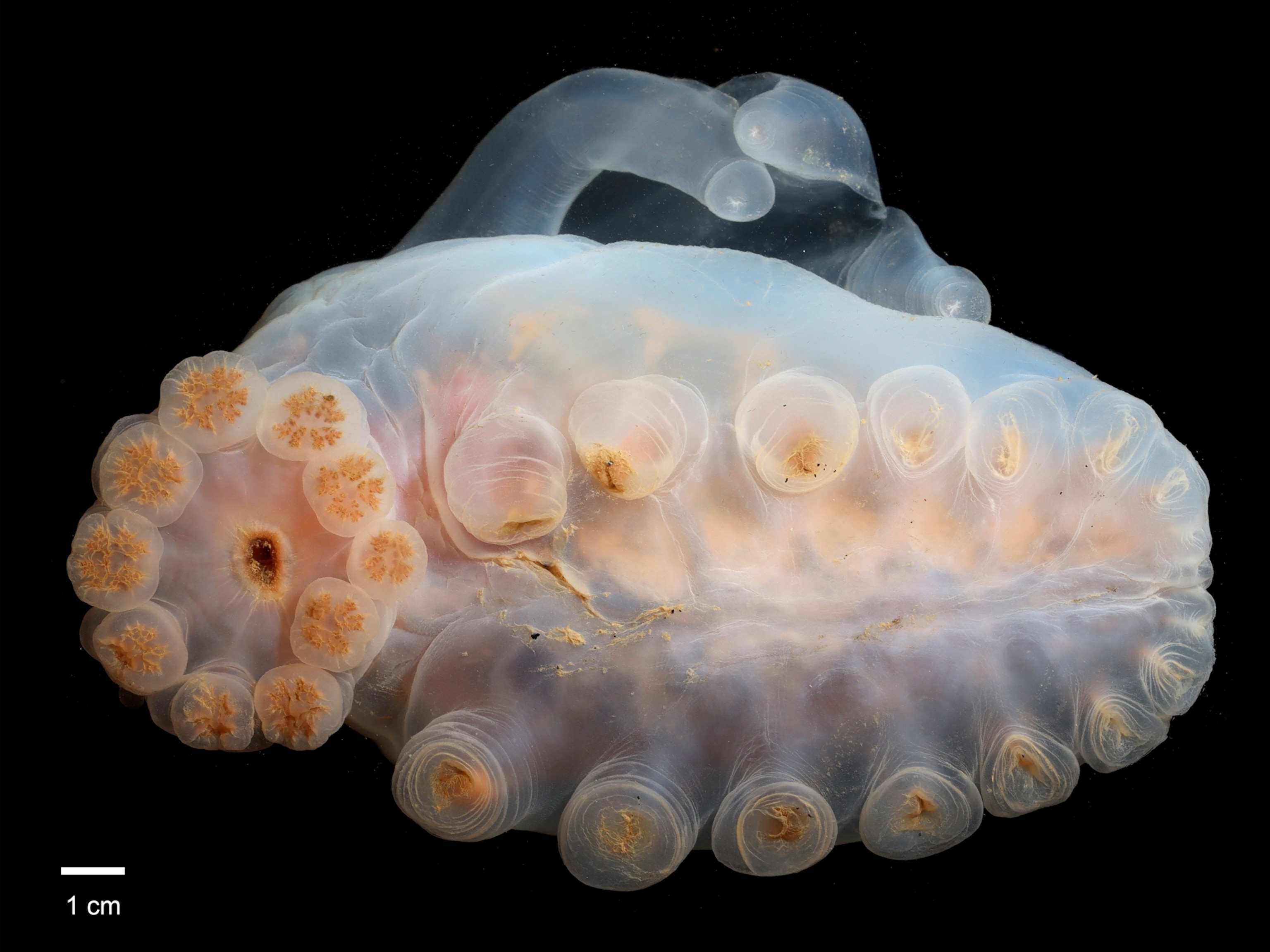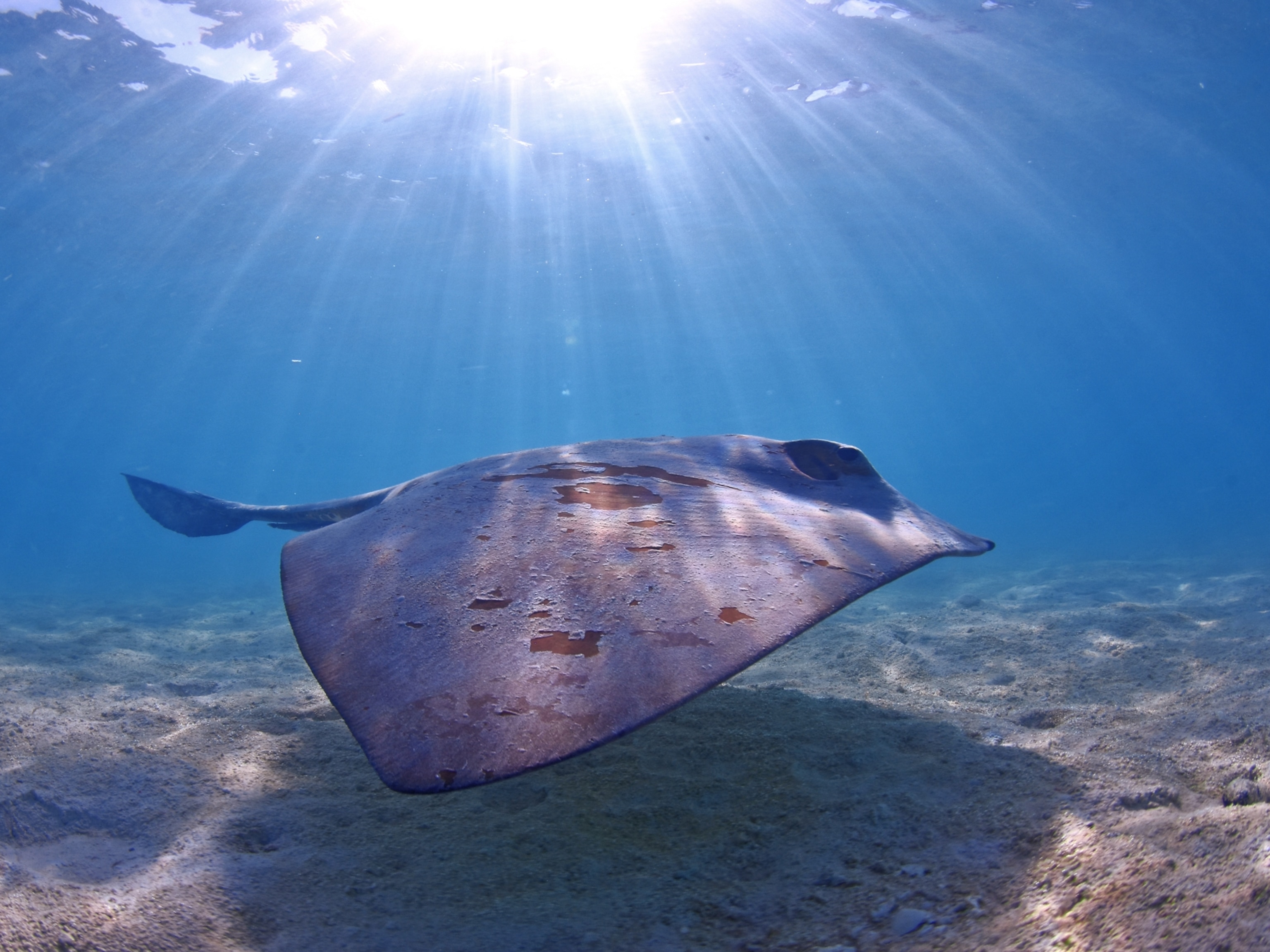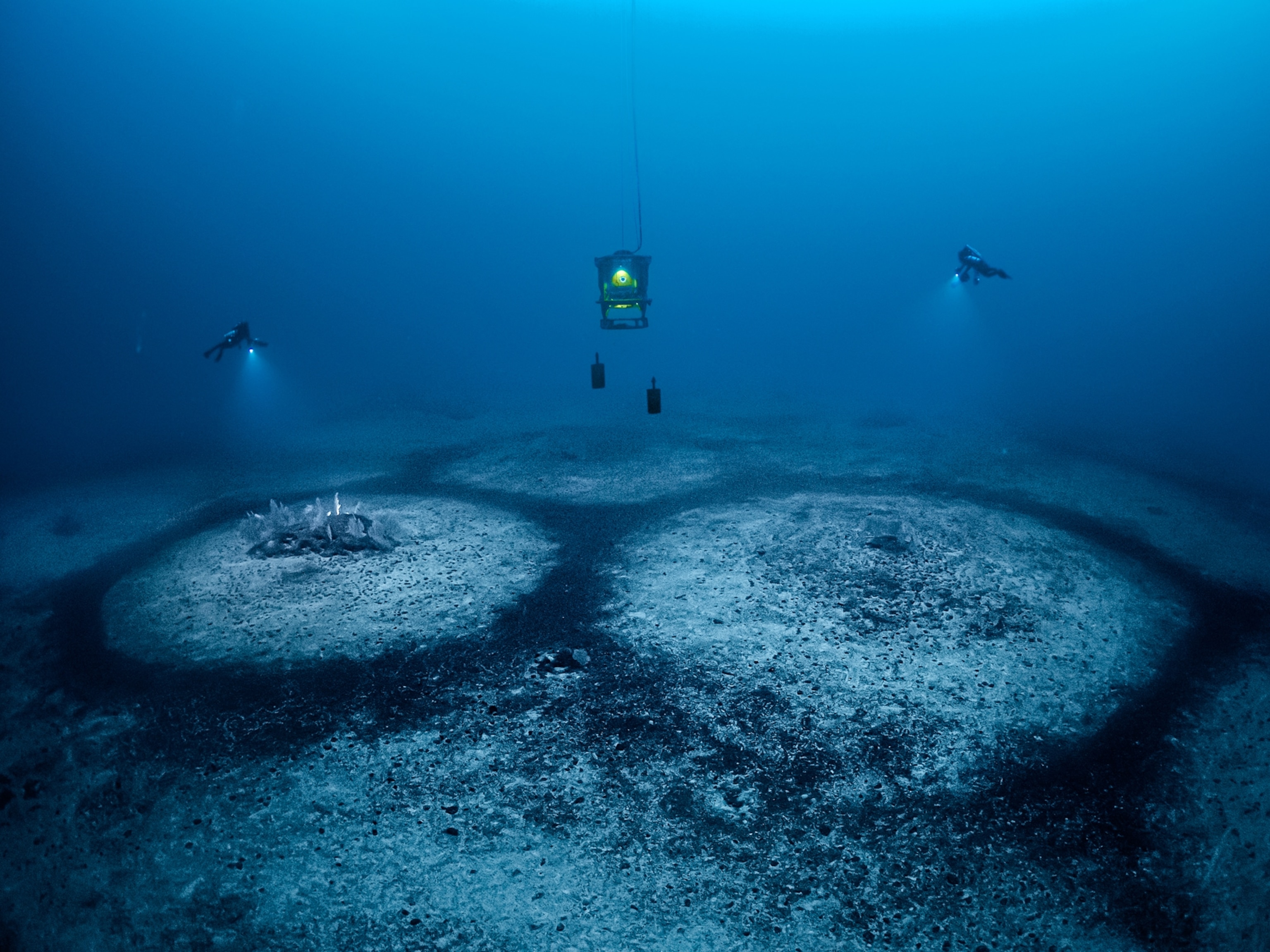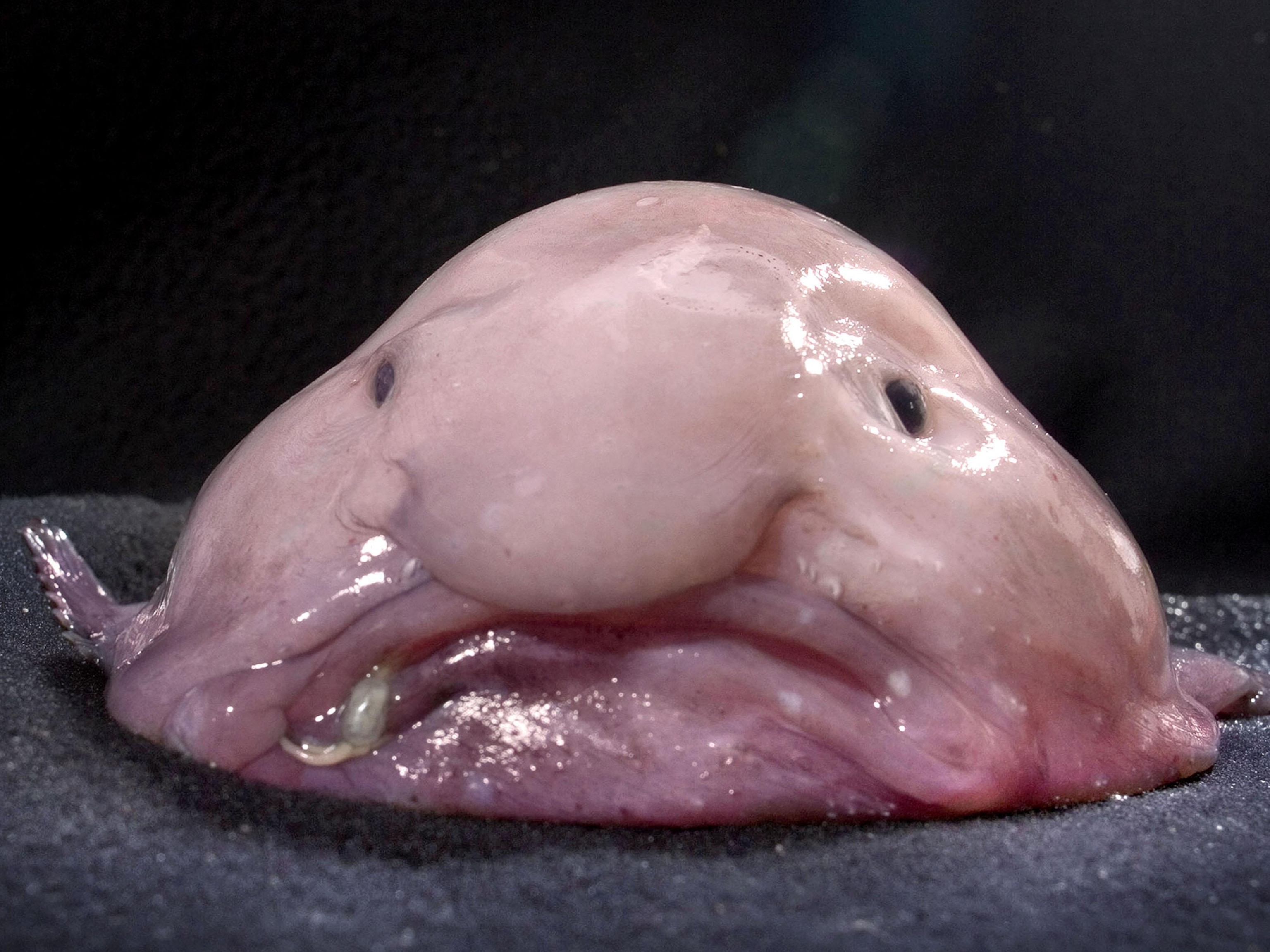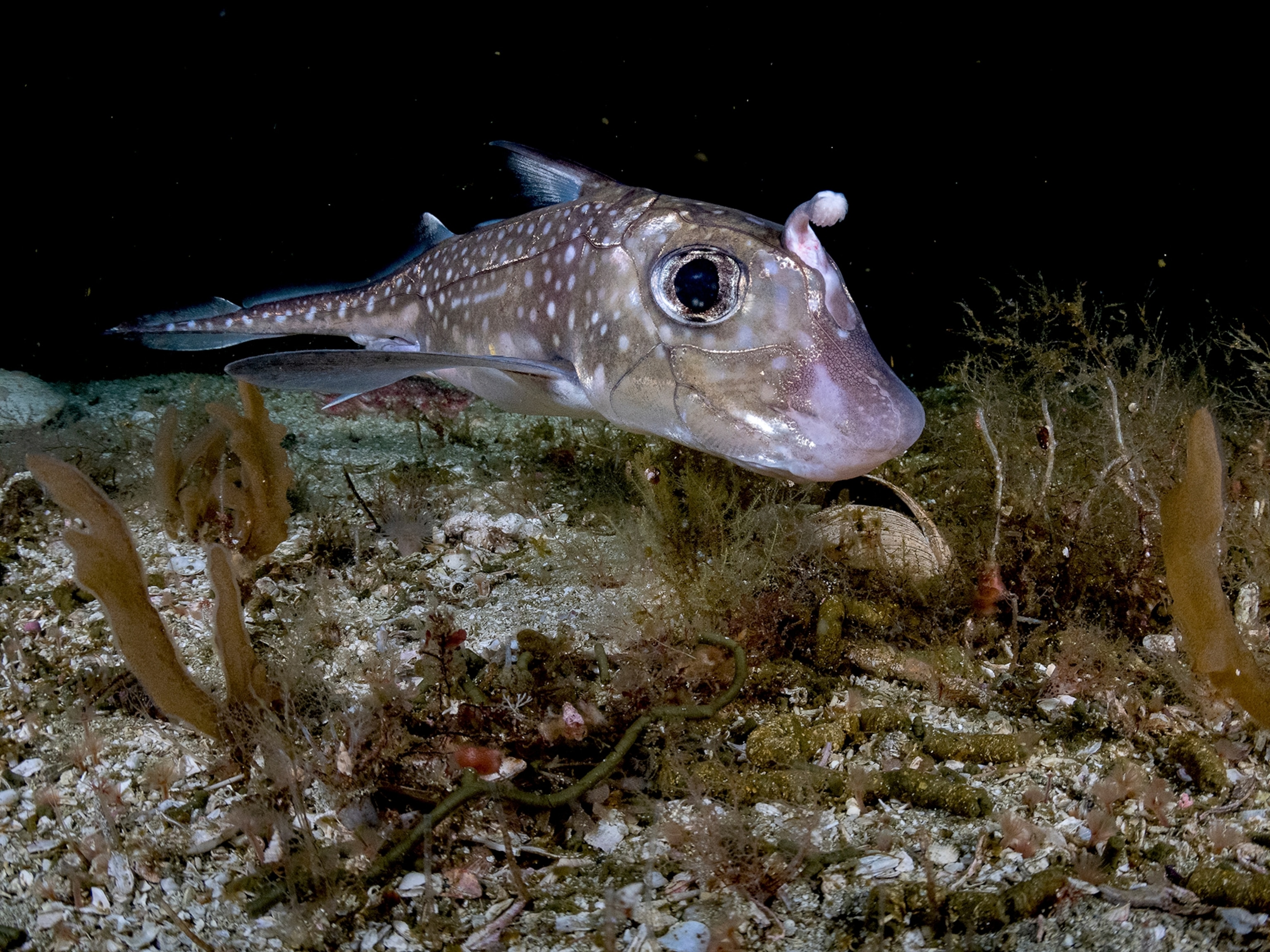Behold the pigbutt worm, mystery of the deep
They're tiny, blobby, butt-shaped, and glow in the dark. What the heck are they? Scientists are still figuring them out.
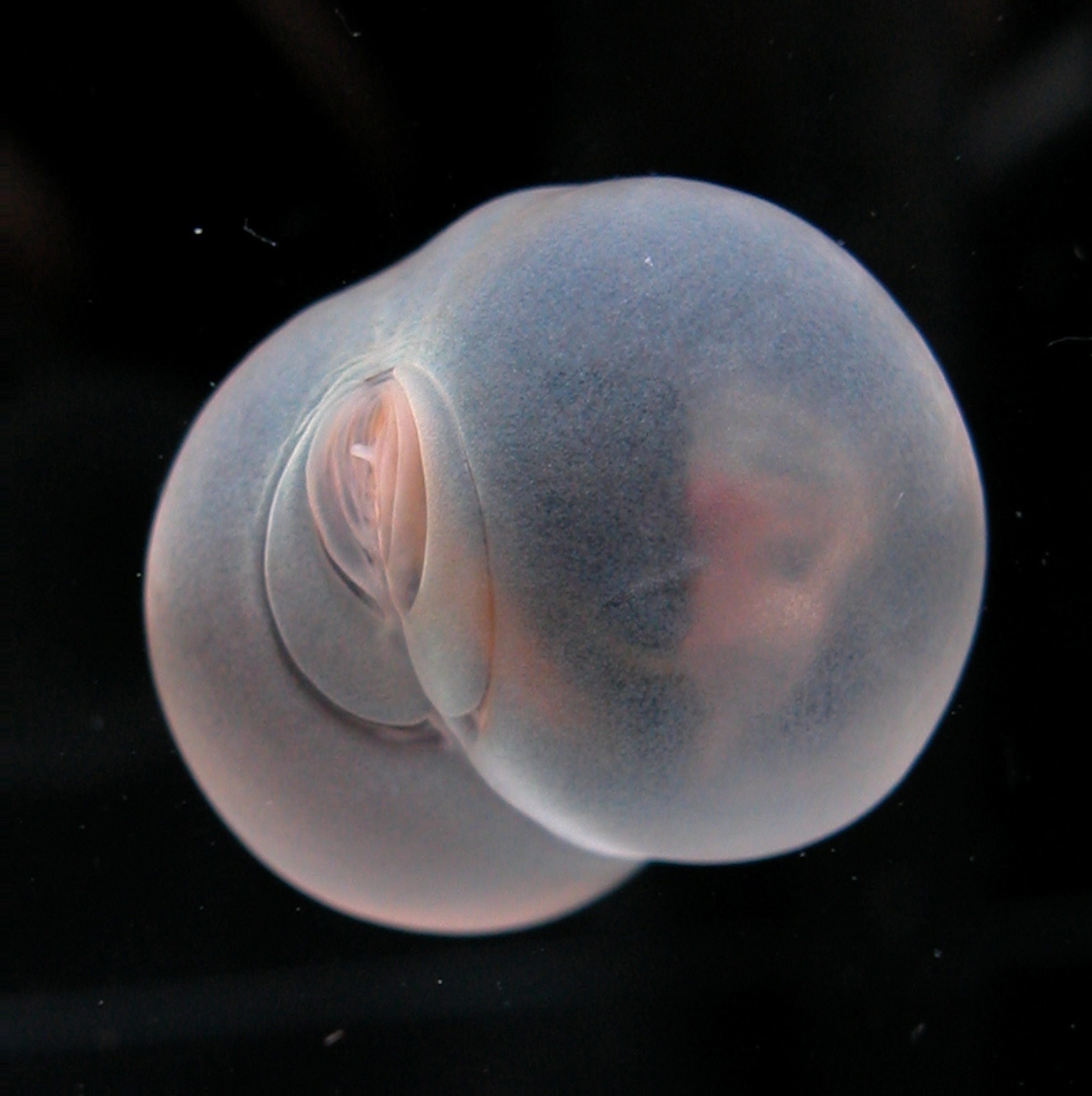
More than 90 percent of the creatures living in the ocean have yet to be described, so it’s not all that surprising that scientists continue to find new species of fish, crustaceans, jellies, and sea slugs each time they venture into the ocean’s deepest, darkest haunts. But sometimes they encounter a creature so strange, it defies quick categorization.
Such was the case in 2001 when experts from the Monterey Bay Aquarium Research Institute piloted a remotely operated submersible to depths between 2,700 and 7,200 feet off the coast of California. It was there, in the lightless Midnight Zone, named for fact that no surface light reaches these depths, where they came face to face with a translucent, pink blob about the size of a hazelnut.
“It was bigger than most of the small particles that we see down there,” says Bruce Robison, a senior scientist at the MBARI. “As we zoomed in on it with the camera, everybody was remarking, ‘I’ve never seen anything like that before.’”
(Scientists capture extremely rare footage of a black seadevil)
Viewed from one side, the creature seemed to be composed of two distinct lobes—or maybe cheeks would be more accurate. In any event, the more all the scientists gawked at the blob floating in the water column, the more they seemed to settle on a descriptor.
“Someone commented, ‘It looks like a pig’s butt,’ and everybody laughed and agreed,” says Robison. “Everybody liked it so much that when we got around to naming it, there wasn’t much question that, if we could get away with it, we were going to call it ‘pig butt’ in Latin.”
While the name was already sorted, the scientists still had to determine what the porcine orb actually was. And while scientists have made strides in figuring that out, plenty of mystery still endures to this day.

Identifying a ‘mystery blob’
Karen Osborn, a marine biologist currently at the Smithsonian National Museum of Natural History, was interning with MBARI at the time, and she still remembers the moment she met her first pigbutt worm.
“They were like, ‘There is this mystery blob, and we don’t really know what it is,’” says Osborn.
At first glance, Osborn remembers thinking the blob looked a bit like the bristle worms (also known as polychaeta worms) she studied. But there were two immediate problems. First, as adults, bristle worms spend their lives burrowed into the seafloor in tubes of their own creation. And second, even if the strange creature was a larval bristle worm, which are known to float freely in the water column, the animal was at least 10-to-20 times the size of any bristle worm larvae she’d ever seen.
Then, under the microscope, more peculiarities came into focus.
Bristle worm larvae are usually made up of more than a dozen segments, explains Osborn. But the pig butt specimen had a distinct anatomy. It was like a bristle worm took two of its central segments and inflated them like a balloon. The other segments were still there, but scrunched down on the end and less obvious.
That similar-but-different look reinforced the idea that the pigbutt worm was a kind of bristle worm, just one she hadn’t seen before; and that hunch was later backed up by DNA analysis.
Fascinatingly, the scientists still aren’t quite sure if the animal is an adult or a larva, though.
The best guess right now, says Robison, is that the adults in this species retained some larval qualities, like the ability to spend its days floating in the water column. (When adult organisms maintain juvenile features, it is known as neoteny. The axolotl is one common example.)
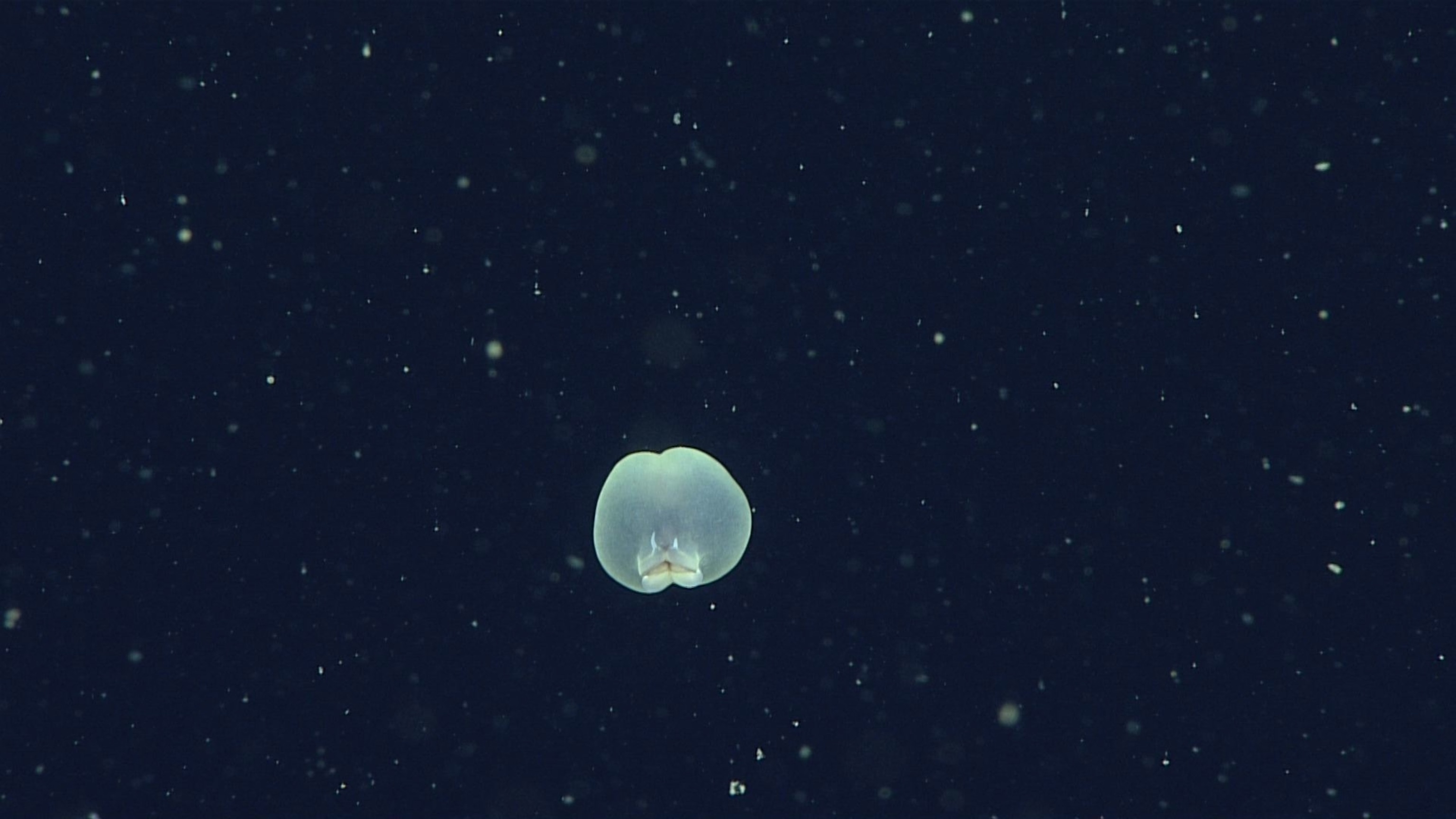
Pigbutt worms can glow
Beyond the pigbutt worm’s striking appearance, scientists have managed to learn quite about these mysterious creatures over the decades—both from observing more specimens in the wild, as well as by watching them closely back at the lab.
“We noticed that they were frequently attached to a sort of amorphous mucus cloud,” says Robison, referring to the translucent filaments that sometimes surround the creatures like an umbrella.
The pigbutt worm likely feeds upon marine snow, fecal pellets, and other detritus that become ensnared in the snot, he explains.
Back at the laboratory, the scientists have also observed that, like many creatures of the deep, pigbutt worms have evolved bioluminescence.
(Greenland sharks can live for centuries. We're finally learning their genetic tricks.)
Poke them gently, says Robison, and they’ll flash blue light. And sometimes, their mucus nets will also glow green. The lights likely repel predators.
“It makes me happy to think that right now, somewhere out there, millions of pigbutt worms are tumbling through the ocean depths,” says Rebecca Helm, a marine biologist at Georgetown University, in an email.
Helm helped bring the pigbutt worm back into the limelight earlier this month when she began posting about the creature on Bluesky—an attempt to use wonder of the world to help folks recharge in an uncertain time, she says.
“The surface area of the high seas is larger than the surface area of Mars,” says Helm. “I always wanted to be a planetary explorer, and when I study the ocean, it feels like I'm doing just that.”
Robison couldn’t agree more.
“We’ve been working in the deep-water column out here for more than 30 years,” he says. “And we’re still finding new stuff.”



